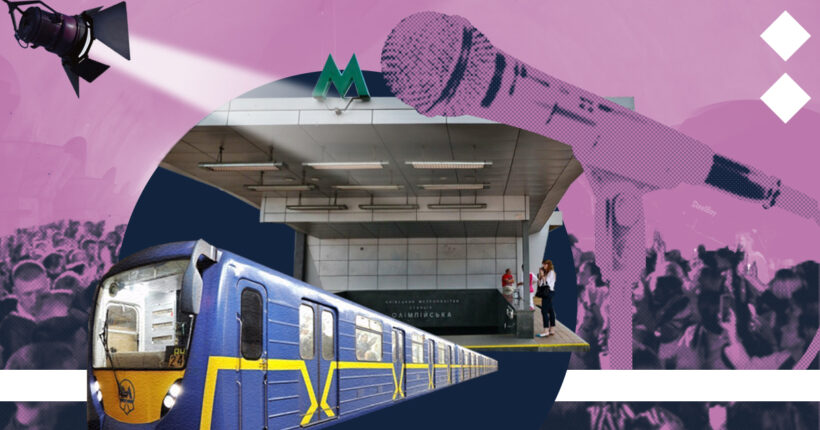
Kyiv, April 2022. The Armed Forces of Ukraine have already liberated the Kyiv region from the russian occupiers, and life in the capital is gradually adapting to new realities. Even though the city is still constantly shelled with missiles, hundreds of people have gathered in the Kyiv subway not only for their safety but also to feel alive again. On April 24, 2022, the Ukrainian band Okean Elzy, whose songs are for many a symbol of the independence and indomitability of the Ukrainian people, was the first to turn the Kyiv subway into a concert venue and held a charity concert, "Vse bude dobre" — "Everything will be alright" — as a reminder of what Ukrainians are fighting for. One of the most beautiful metro stations in the world, Zoloti Vorota, has become the safest place for the concert. It was broadcast to the whole country on the air during a nationwide telethon on April 24 to raise funds to support children affected by the war. The charity evening collected more than $217 thousand.
It was the first of many concerts which have become normal in Ukraine's new reality. Since then, the Kyiv subway has become a venue for public talks, concerts, filming, and press conferences of Ukrainian celebrities and foreign guests.
What is the problem?
With the beginning of russia's full-scale invasion, the air raid alarm became like a daily companion of Ukrainians. Since the full-scale war began, 703 alarms have sounded in Kyiv, totaling 789 hours and seven minutes.
For many Kyiv residents, the subway became a refuge during the hazards of missile attacks – the only place they could feel safe. Naturally, Ukrainians try to adapt to new conditions in an attempt to coexist with constant tension and stress. In such conditions, it is vital to distract yourself from daily news and statistics, and a concert in a shelter can become such a tool for "de-escalation." But not only. It is also a powerful tool for supporting Ukrainian culture through the challenging times it faces in war.
War against everything Ukrainian
russian attacks have damaged or destroyed hundreds of cultural buildings and facilities — from museums to concert venues. This is not only a colossal damage to the development of culture in Ukraine, but also a blow to the everyday life of Ukrainians, who suffer daily from the consequences of russia's aggression. Today, many Ukrainians do not have access to cultural spaces in their communities. In addition to destroyed monuments of culture and art, even intact centers of culture limit access to their expositions for security reasons. As of March 10, 2023, the Ukrainian government documented 553 damaged and destroyed objects of cultural heritage and cultural institutions of Ukraine in 11 regions, and UNESCO, in turn, confirmed the damage to 246 objects.
In addition to the physical destruction of cultural locations, new challenges have arisen for the organizers and participants of any cultural events. Now the relevant premises or site must have a bomb shelter large enough to accommodate all participants, and holding mass events in Ukraine is possible only in some cases and in agreement with the authorities. The event organizers must not only ensure the regular observance of public order, the availability of first aid, mandatory compliance with fire safety rules, now they have to consider another danger: russian missiles. As soon as the air-raid alarm sounds in the city, the event must stop, and the organizers must ensure that the visitors are evacuated according to a pre-approved plan.
The process of preparation and implementation is complicated, considering the security requirements. Still, the need to preserve Ukrainian culture is more urgent than ever because it is precisely that – Ukrainian identity – for which the country's defenders are now fighting on the front line. Cultural annihilation is a central tactic of russia's campaign of aggression and violence in Ukraine, which has been ongoing for more than nine years. russia seeks not only to control the territory of Ukraine but also to erase Ukrainian culture and identity, to impose the russian language on Ukrainians, as well as a manipulative, chauvinistic, militaristic version of russia's culture, history, and worldview. This is stated in the joint report of the American and Ukrainian PENs — an international human rights organization that unites journalists and human rights defenders.
But despite the war, Ukrainians do not stop trying to find solutions that make further development of culture possible. One of the solutions was holding concerts of Ukrainian and foreign artists in the subway. If earlier such shows could take place under any conditions, today, they are held deep underground for the sake of safety.
What is the solution?
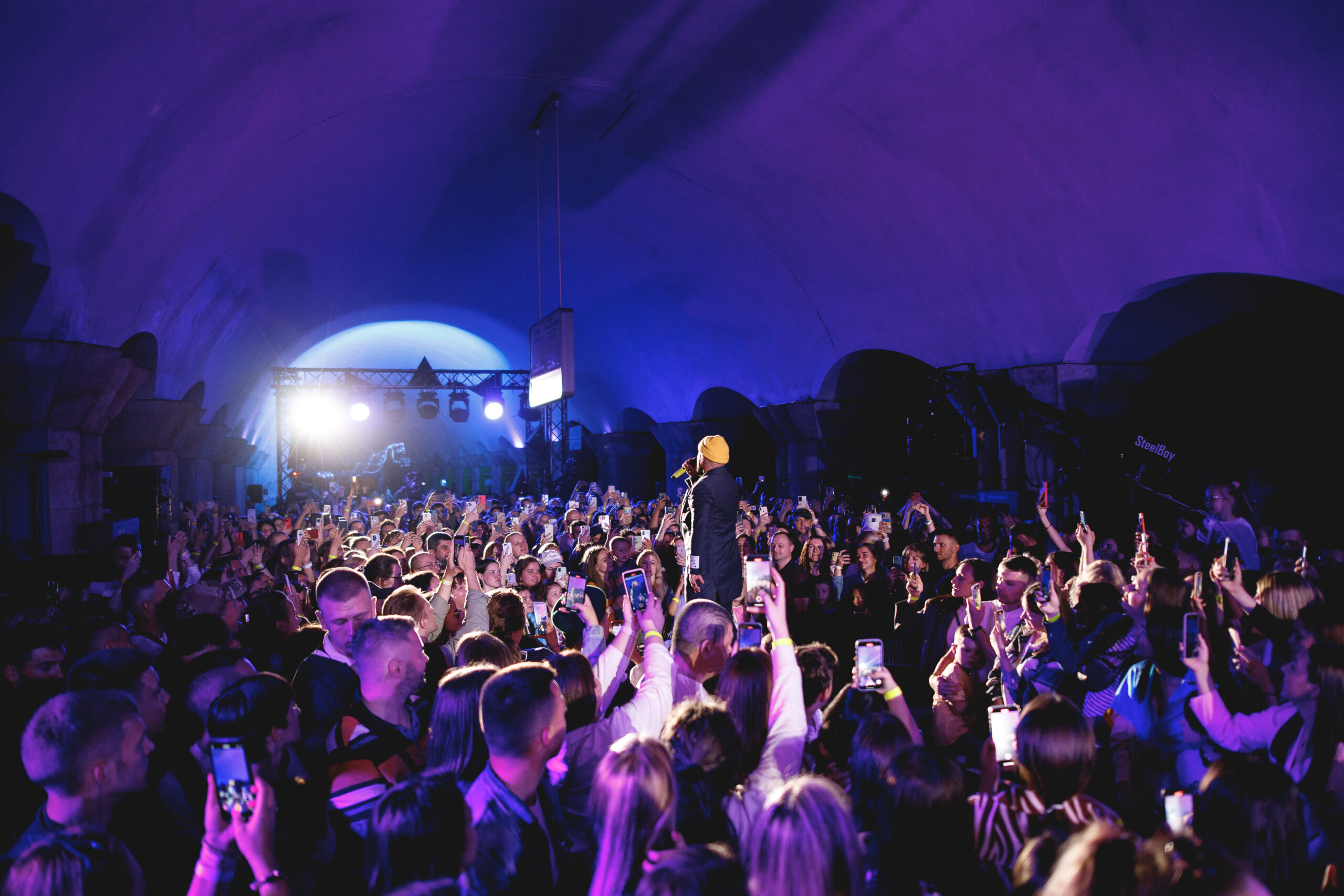
Monatik performing in the Kyiv metro in September 2022
The Kyiv subway was built during the Cold War and has operated as a dual-purpose facility since 1960 — the first stations were dug deep into the ground so that they could be used as shelters in the event of a nuclear attack. There is no safer place in the city. The idea of using the Kyiv metro as a venue for creative events arose long ago, says Natalka Makohon, ex-deputy head of the Kyiv metro. The bustling subculture of the metro has always interested people of creative professions engaged in making music videos, films, and advertisements.
The Kyiv metro began developing a mechanism for holding cultural events around 2014. Kyiv's metro has already cooperated with many global brands — Apple, Google Pay, and Lacoste shoot their advertising campaigns there, and have been featured in film and TV series like HBO's "Chernobyl."
Previously, filming in the subway was carried out regularly. With the beginning of the war, everything changed, including the subway operation. Makohon explains that the need for extreme additional security measures came with a full-scale invasion. People can be at the stations during the air alert and at any other time, not only during the working hours of the metro as a means of transport from 6 a.m. to 10 p.m. but also during the curfew, which in Kyiv lasts from 11 p.m. to 5 a.m. Some people basically lived at metro stations in the first months of the full-scale invasion.
Accordingly, holding events in the metro then was out of the question. But as the country slowly began to recover from the initial shock of a full-scale invasion and return to life, so did cultural events. It was not on the pre-war scale, but in some places, performances, exhibitions, and concerts began to be held again, and the subway turned out to be the safest place to organize such an event. For this purpose, the Maidan Nezalezhnosti station was chosen because of its central location near the capital's administrative center. Some of the first events of this kind were of state importance, including the press conference of President Volodymyr Zelensky and meetings with international representatives, including the British billionaire Richard Branson. The subway, which was built with possible threats in mind, was an ideal place to provide adequate security conditions.
"Nowhere in the whole world that we would rather be in today than in the great city of Kyiv," U2 vocalist Bono said during his visit to Kyiv from an improvised stage in the subway. On May 8, at the invitation of the president, lead signer Bono and guitarist and keyboardist Edge came to Ukraine to support Ukrainians and perform a duet with Ukrainian performer Taras Topolia of the band Antytila, who had joined the ranks of the Territorial Defense in the first days following russia's invasion. After this concert, the idea to make such shows regular appeared. After Bono's speech, the subway became another symbol of the indomitable Ukrainian nation and a signal that international celebrities are on Ukraine's side and ready to support it.
How does it work?
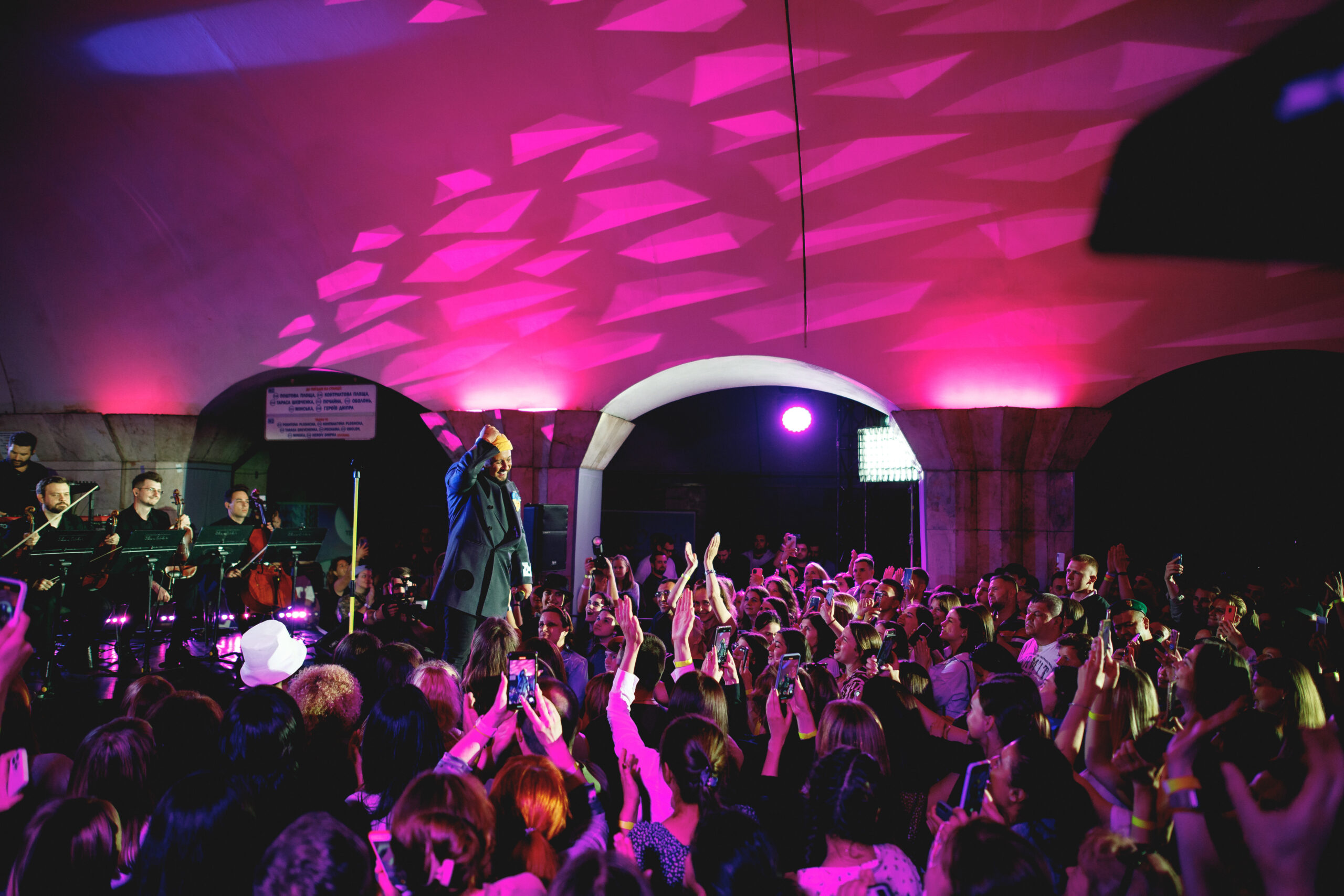
According to Dariia Zarivna, a communications adviser to the head of the President's Office, the idea of performing in the subway appeals to international artists who want to support Ukraine but also put safety above all else – and this is exactly what the Kyiv metro can provide.
The preparation process for events varies: if the metro provides the location, the organizers arrange it accordingly — they set up an improvised stage, a cinema, and space for press conferences, interviews, or other events. A special episode of David Letterman's show "My Next Guest Needs No Introduction" with President Zelensky, released on Netflix in December 2022, was filmed in the Kyiv metro.
But the metro became a platform not only for events of this scale — according to the head of the Kyiv metro Viktor Braginskyi, the metro always allowed the citizens to relieve stress while feeling safe. Performers regularly visit the stations to entertain children; psychologists conduct trainings, and even the National Guard Orchestra has performed.
How to arrange a concert in the metro?
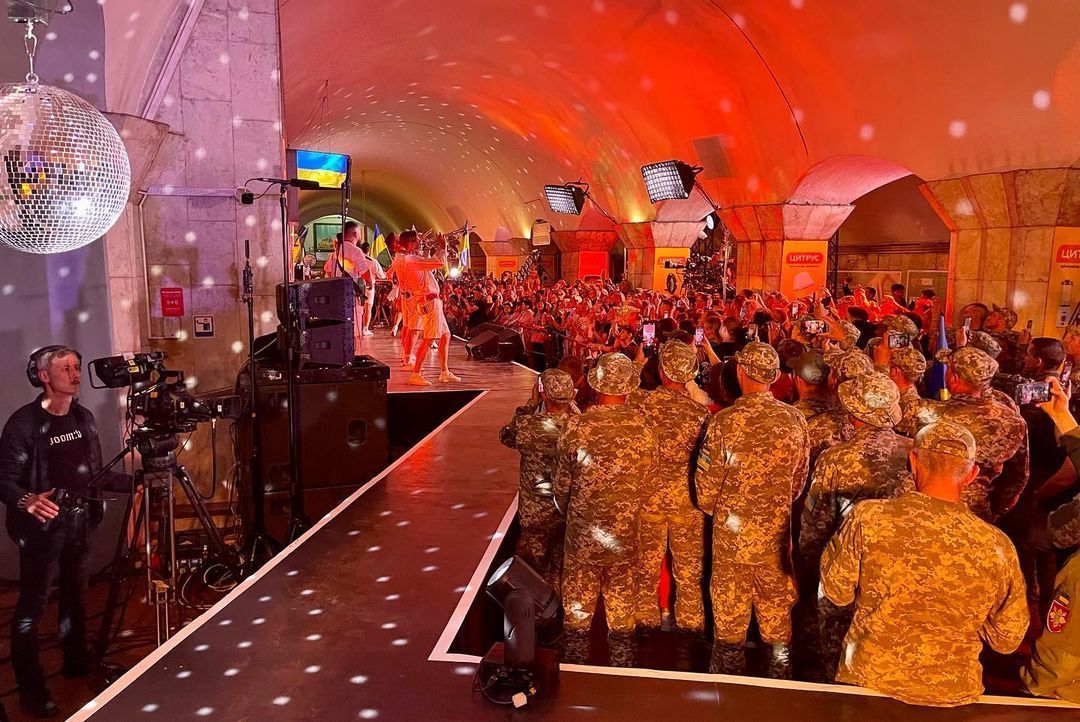
Verka Serduchka performing at Maidan Nezalezhnosti metro station in Kyiv
If before the full-scale invasion, the process for holding a cultural event in the subway was quite easy and clear, but now it is not available to every artist. Kyiv City authorities must decide whether the event is appropriate, if the security situation allows it, and what resources are necessary. If the event is given the green light, new logistical challenges await to set up a stage with light and sound in the subway's unconventional underground environment.
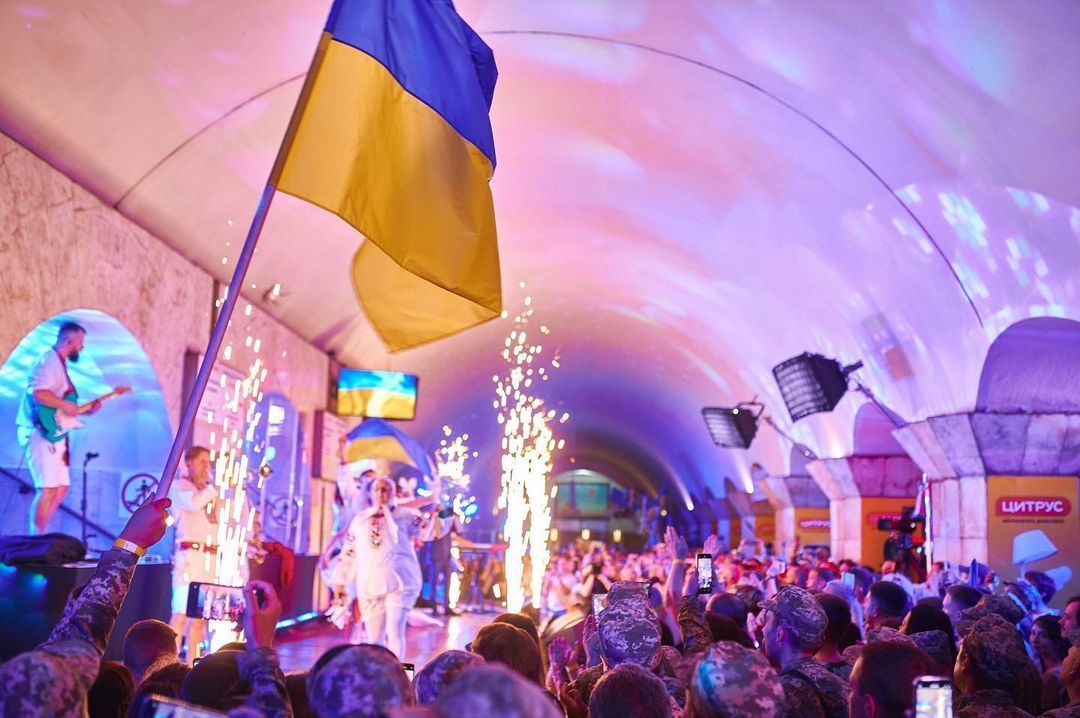
Performances are held in two formats — a concert with 250 spectators (seated) and a show with up to 800 guests. The guest list is managed by the Armed Forces, Ministry of Internal Affairs, and Territorial Defense; the organizers also cooperate with volunteer organizations, hospitals, and "Ukrzaliznytsia."
Does it really work?
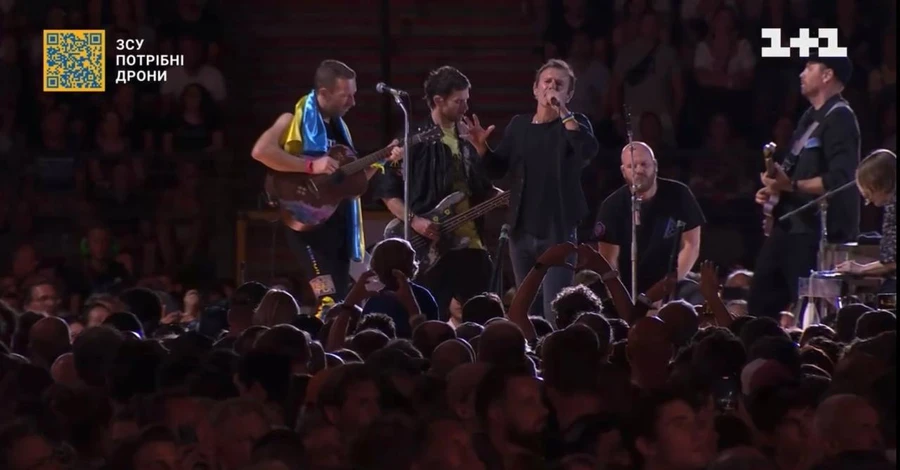
Okean Elzy performing at Ukraine's Independance Day concert
One of the most memorable subway concerts during the war was a concert dedicated to Ukraine's Independence Day, featuring performers Go_A, Boombox, Jamala, and others. Imagine Dragons, and Coldplay, as well as Sting, performed via video. The concert received 400,000 views on YouTube.

The finals for Ukraine's contestants for Eurovision 2023 was held in the Kyiv metro
The finals for Ukraine's contestants for Eurovision 2023 was also held in the Kyiv metro, where the band TVORCHI was chosen to represent Ukraine at the competition held this year in Liverpool, England. The selection was conducted under such conditions for the first time, at a depth of 90 meters and with the help of generators, due to a power outage caused by a russian missile attack.
Another successful case was the New Year's "United together toward the new year" concert, which was also held at the Maidan Nezalezhnosti metro station. People who are working toward Ukraine's victory — soldiers, doctors, energy workers, and railway workers were special guests. Thirty artists, both newcomers and stars such as Okean Elzy.
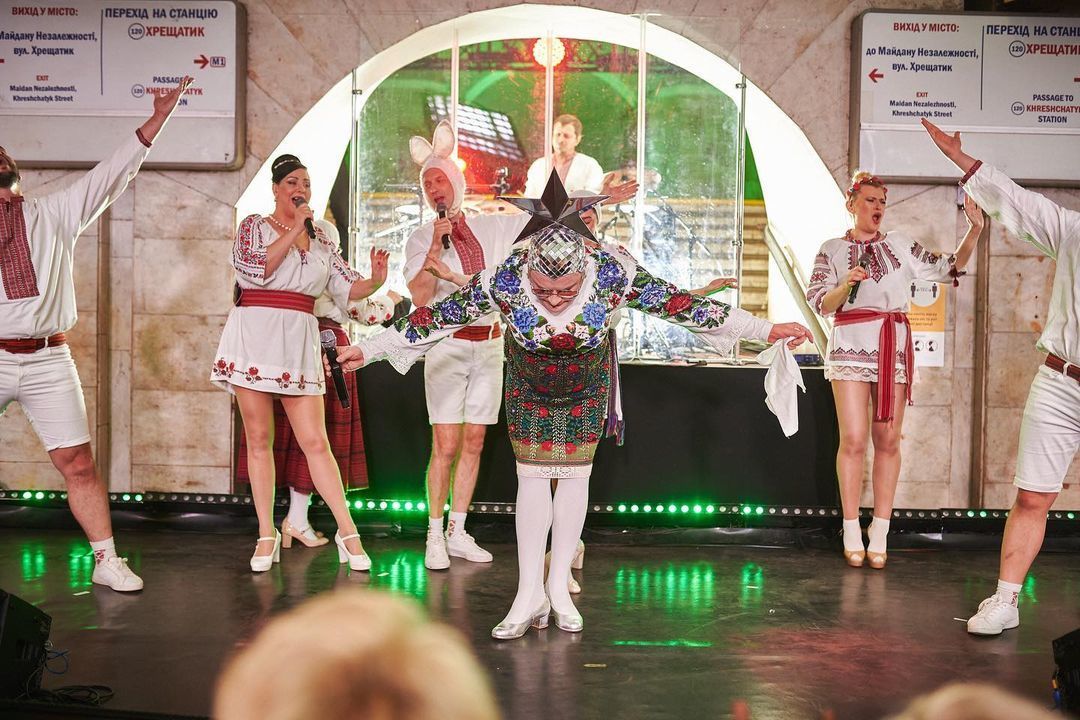
Organizing events of such scale during the war at a critical facility like a metro station is not easy. Therefore, such events were held mainly by state institutions, and it is not easy for the general public to attend such an event. Not all Kyivans liked this solution. Since the Khreshchatyk and Maidan Nezalezhnosti metro stations worked exclusively as a shelter and a platform for cultural events, passenger the trains did not stop there. The concerts were by invitation only, and when the air alarm sounded in the city on the day of a certain event, long queues formed, making it difficult to get into the shelter. But as of December 20, 2022, Khreshchatyk and Maidan Nezalezhnosti metro stations began to work in full mode, so the frustration is over.
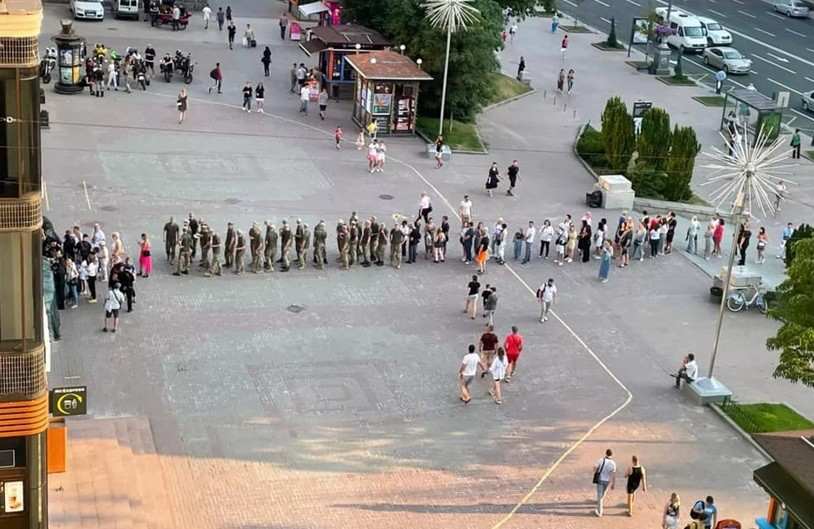
People queueing to get to Khreshchatyk metro station
Makohon is convinced that cultural interest in using the subway as a cultural venues will definitely not fade because, in many subways worldwide, filming is either prohibited or the procedure is so complicated that companies and artists are not willing to go through it. Therefore, the ex-deputy head of the Kyiv metro is sure that this initiative will develop.
Even more useful solutions!
Currently, 46 underground stations are operating around the clock as shelters. They have drinking water, sanitary facilities, a ventilation system, and the Internet. And in March 2023, the International Organization for Migration provided the Kyiv metro with folding chairs, blankets, and mattresses to help make the stay of the capital's residents at underground stations more comfortable during air alarms.
"The aid will be distributed to each underground station used as a shelter. In order to get chairs, it is necessary to contact the staff on duty at the station. Blankets and mattresses will be used in the event of longer air alerts over 12 hours," said Kyiv Mayor Vitali Klitschko.
The subway remains a reliable refuge for citizens and Ukrainian culture.
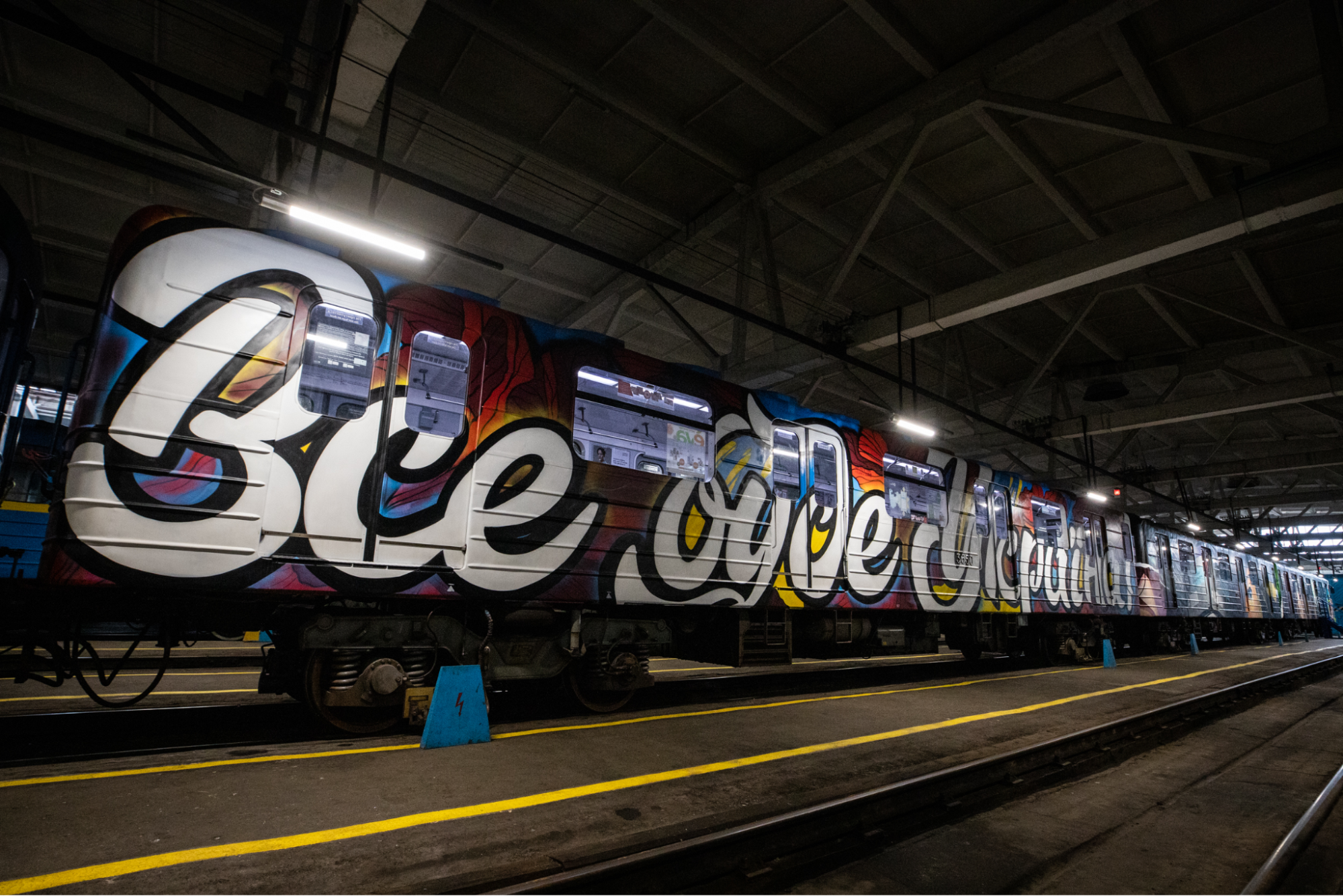
Art train will run in the Kyiv subway. Photo: Kyiv City Council

Next station — Invincibility. How metro became Ukraine's mainstay

When subway becomes home: five stories of people from Palats Ukraina station

Metro is ... Kyiv metro is 60 years old
This project is funded through Transitions' solutions journalism program, which aims to strengthen the adoption of solutions journalism across Central and Eastern Europe.
Newsletter
Digest of the most interesting news: just about the main thing





